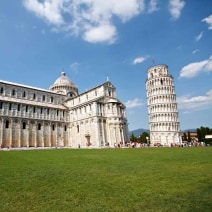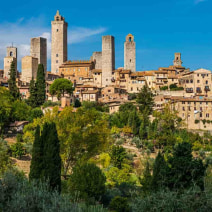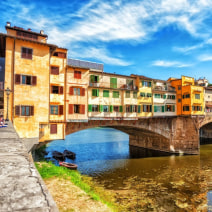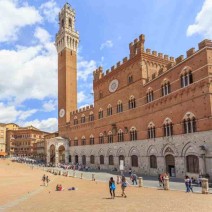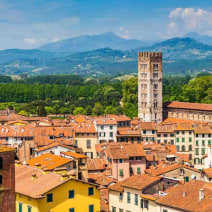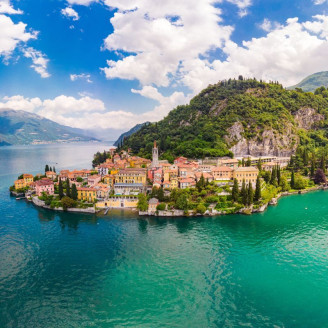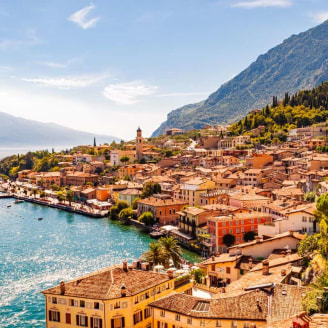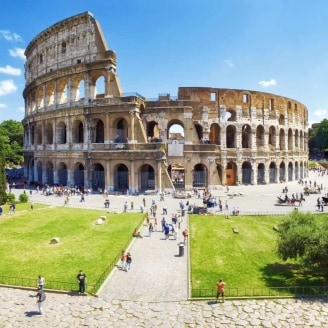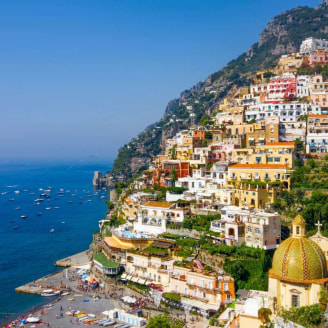Tuscany Travel Guide
One of the most beautiful areas of Italy and regarded as the birthplace of the Italian Renaissance, the Tuscan region offers a wonderful mix of art, history, culture, thermal spas, Chianti vineyards and its countryside is blessed with unspoilt natural beauty.
A region in central Italy, Tuscany is famous for its stunning natural landscapes, characterised by its rolling golden fields, vibrant green vineyards, medieval hilltop towns and cypress-lined roads.
Amidst all this beauty lies the thermal spa town of Montecatini, the ideal holiday base for excursions to Tuscany’s top sights; such as Siena, the mediaeval towers of San Gimignano, the Leaning Tower of Pisa and Lucca’s ancient walls. The region's capital of Florence, once home to influential artists Michelangelo and Leonardo da Vinci, also offers countless attractions like the Duomo, Piazza della Signoria and Ponte Vecchio.
We've outlined some top tips and recommendations below to make sure you don’t miss out on any iconic sights or hidden gems on your holiday to Tuscany.

Time Zone & Currency
Italy is one hour ahead of Greenwich Mean Time (GMT) throughout the year. The currency in Italy is the Euro.

Weather In Tuscany
The inland valleys of Tuscany enjoy warm summers and cool winters and tend to assume a continental character the further inland you travel.

Reading For Your Trip To Tuscany
Under the Tuscan Sun by Frances Mayes
The Savage Garden by Mark Mills
Innocence by Penelope Fitzgerald
Best time to go to Tuscany
Tuscany can be enjoyed at any time of year. The main tourist season runs from April until October. July and August can be hot (30C°+) but evenings are pleasant and perfect for strolls through the atmospheric streets and piazzas of Tuscan villages and towns. To experience cooler temperatures while sightseeing in Tuscany, travel in late spring, early summer or autumn.
Top Tourist Attractions In Tuscany
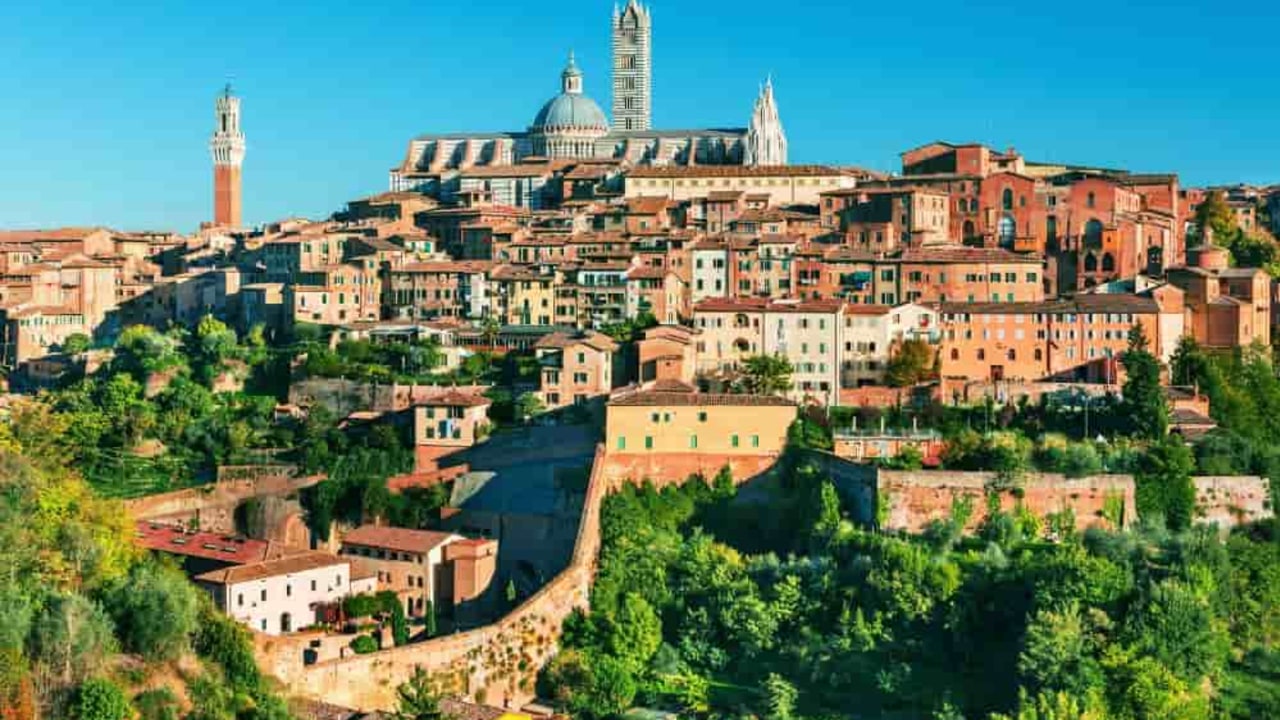
Visit Tuscany The Heart Of Authentic Italy
Tuscany, proud birthplace of the Italian Renaissance and famously rich in art and culture, is also admired the world over for its beautifully preserved medieval hill towns, set amidst landscapes of lush vineyards and silver-green olive groves.
Food and drink in Tuscany
Tuscany is known for earthy, robust dishes, made from the finest of local ingredients. Some must try dishes include:
- Bistecca alla Fiorentina: A thick T bone steak grilled over a wood or charcoal fire, and traditionally served rare.
- Panzanella: A salad made of stale bread soaked in cold water and vinegar, mixed with diced tomatoes, onions, and basil, all sprinkled with the exquisite olive oil for which the region is famous.
- Ribollita: A hearty soup made with stale bread, cannellini beans, kale, and seasonal vegetables, slow-cooked to perfection.
- Castagnaccio: A traditional chestnut flour cake, flavoured with rosemary, pine nuts, and sometimes raisins, popular in autumn.
Wine lovers will be spoilt for choice, from the fruity white Vernaccia di San Gimignano to the mouthwatering red, Rosso di Montalcino, and many more besides.
Tuscany Travel Guide FAQs
Can you give a brief history of Tuscany?
Although Tuscany has an impressive history, where the Romans established the cities of Pisa, Siena and Florence, the capital of Tuscany, it's probably best known for being the birthplace of the Italian Renaissance; a period of cultural, artistic and scientific transformations between the 14th and 17th century. Tuscany was home to Michelangelo, Leonardo da Vinci, Galileo, Dante and Botticelli, among other famous artists and scientists. In 1569 the Italian monarchy of the Grand Duchy of Tuscany replaced the Republic of Florence and it was ruled by the House of Medici until 1737. The Medici family were a powerful dynasty and influential banking family who helped fund the Renaissance and they produced four popes. In the 18th century when Napolean conquered most of Italy, he made his sister Elisa Bonaparte the Grand Duchess of Tuscany, who ruled for a short period before being forced to abdicate and Ferdinand III resumed his role who previously had to flee from the French. In 1860, this monarchy came to end with the Unification of Italy, the modern country as we know it now and for a very short period, 1865-1870, Florence was the capital and it was then changed to Rome. Before Mussolini came to power in 1922, the Tuscan region was politically more socialist and left leaning, but inevitably faced political and social changes under the fascist party. Like the rest of Italy, Tuscany was impacted by WW2. Florence was occupied by the Germans and Allied bombers destroyed many buildings, remarkably the Ponte Vecchio stayed intact. The city was liberated by the Allies on August 11th 1944. The region's industries of agriculture, manufacturing and tourism helped with economic growth and to rebuild after the war.
I have walking difficulties, is a holiday in Tuscany suitable?
Our guided tours in Tuscany will involve periods of walking and standing, at times on uneven or cobbled surfaces. There will be steep inclines or steps to negotiate at some locations. Up to 20 minutes’ walk from the coach parking area to the start point of the tour would apply in some cities, notably Florence. A reasonable degree of health and mobility is required. For all our tours we have an activity level guide to help you decide which holiday suits you best. For specific advice regarding our Tuscany tours and to discuss any special needs, please contact us directly and we will be happy to assist you.
Is Tuscany a good holiday destination?
Tuscany is one of the most beautiful areas of Italy with a fabulous heritage just waiting to be discovered. The country’s most iconic region and the origin of the renaissance; you can immerse yourself in its art, culture, history and stunning landscapes. The town of Montecatini Terme is the location for our holidays in Tuscany. The town is known for its history of thermal baths and spas, which have been a focal point of activity for nearly 500 years. From here, you will have guided tours to Florence, Pisa, Siena, Lucca and San Gimignano, meaning you will get the full Tuscan experience and see some of the best sights in Italy.
Tuscany Travel Advice
- For up-to-date information regarding entry into Italy please see: www.gov.uk
- Official Italian Tourism Board: www.italia.it
